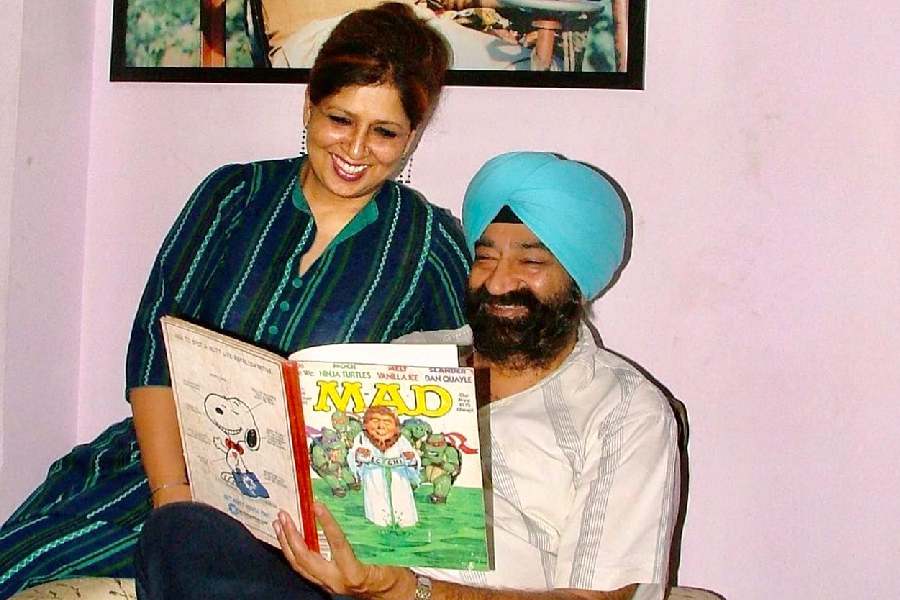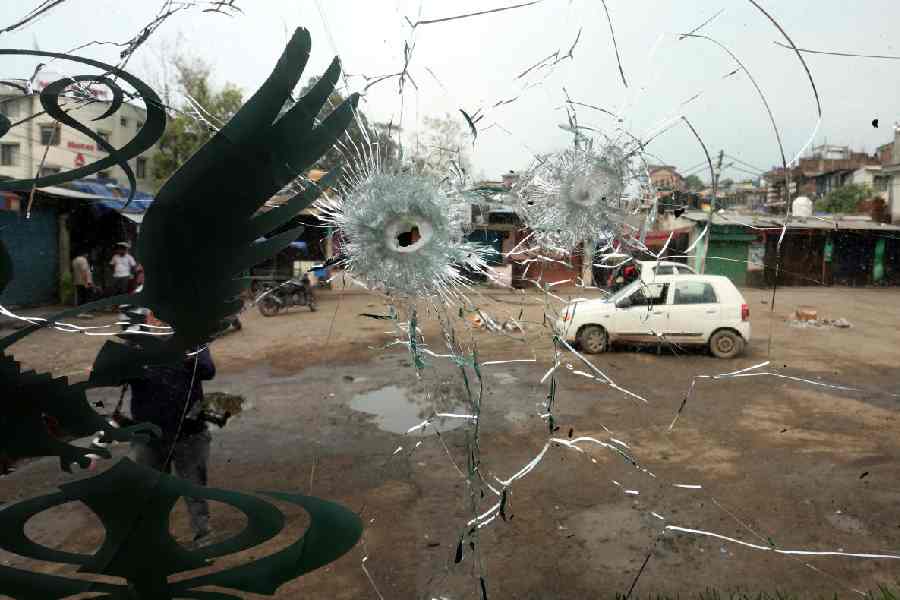They have been transformed from mangled metal to gleaming beauties of vintage worth.
 |
| Shrivardhan Kanoria drives his 1959 MG MGA and (below) Hemant Ruia’s 1913 Minerva at the Cartier show in Mumbai |
Two cars restored by collectors and restorers in Calcutta garages made it to the Cartier Travel with Style Concours d’Elegance 2013, one of them winning a coveted trophy in the roadster category in the country’s most prestigious vintage and classic cars show curated by Indian automotive guru Manvendra Singh of Barwani and organised by Mark Shand, brother of the Duchess of Cornwall.
An English gentleman returning to his homeland from Calcutta in the Sixties sold a gleaming red sports car to Harish Chandra Agarwal, whose grandson rediscovered it in 2007 and restored it.
“It was during my parents’ courtship days that my maternal grandfather had bought the 1959 MG (Morris Garages) MGA and my parents would go for rides in it,” recounted Shrivardhan Kanoria, who inherited his passion and expertise on vintage wheels from his father, Shashi Kumar Kanoria, a pioneer in the field.
But the MG MGA, a sports car from the Morris Garage (MG) division of the British Motor Corporation (BMC), soon changed hands until Shrivardhan, who restores and collects vintage cars, found it with a gentleman in the city seven years ago.
 |
Shrivardhan had to strip the car down to ground chassis for thorough restoration. “We reinforced the chassis, did a complete mechanical overhaul of the drivetrain, including the front and rear suspensions, the brakes, the clutch, the differential, the engine and the gearbox. We did mass-scale fabrication of all the parts to specification, following the workshop manual we got hold of from the MG Club,” he said.
The body of the MG too was built ground up. The body panels were remanufactured and the upholstery redone with photographic evidence and anecdotal experiences of similar car owners through MG Club forums.
The upholstery was made of Italian leather with Burma teak woodwork for front panels. Whitewall tyres and the front windshield were imported from the UK as were the tyre rims. The front grille was fabricated and the headlamps were in stock. It took two years to restore the car, which debuted in the city vintage car rally and won several trophies. It also beat a 1989 BMW E30 in a drag race at Rajarhat.
The car became “famous in Calcutta” before being invited to the Cartier show. “Though the Cartier show is strictly by invitation, we have to apply and the application is sent to judges abroad,” said Shrivardhan.
Prince Michael of Kent, a keen and knowledgeable car enthusiast and president of the Royal Automobile Club of the UK, was the chief judge at the show held in Mumbai last year. Sir Sterling Moss, OBE of Formula One fame, and Mark Shand were also present.
“Cartier invited me to Mumbai and got my MGA transported at their own cost. The car was housed properly and was well-looked after,' said Shrivardhan, whose car won in the Best Overall Roadster category competing with Jags, Austin Haileys, MGTCs.
“The restoration of the MG was very good. Kanoria was given a special gift for his efforts,” said curator Singh.
The other car with a Calcutta connection at the Cartier show was a 1913 Minerva. Owned by Hemant Ruia of Amines and Plasticizers Ltd in Mumbai, it was restored by Sanjay Ghosh of Mandeville Gardens and displayed on invitation.
The Minerva Type NN was bought in 1919 from Belgium by Kalidas Raha, a resident of Mohan Bagan Row in Shyambazar, in the name of his company Sashi Bhusan Raha & Co, one of the largest coal conglomerates of the time.
The car was used by Raha till 1951 to ply between Calcutta and Asansol, a distance of 250km. In 1951, after his death, the car was garaged for over three decades during which time it shed most of its coach work. Some time in the earlier 1980s, the by then-dilapidated Minerva was sold by the Rahas to Premkumar Agarwala in Dhandbad for Rs 10,000.
After another three decades in garage, the Minerva made its way to the Ruia family who flew down from Mumbai to get the car.
“The car came to us with just a running chassis and a few loose spares,” said Ruia, who has Lord Mountbatten’s Rolls Royce in his fleet.
Ruia engaged Ghosh to restore the vehicle. “Restoring the Minerva was very challenging as it didn’t have any existing coachwork. I first did the metal structure. Then I opened it up and did the wood structure. There were no spares, I fabricated it with help and information from the Minerva Club,” said Ghosh, who completed the job in 18 months.
The Minerva entered the Cartier show in the Edwardian category. “It was greatly appreciated by the international judges. It’s a rare car and was expensive in its time. There aren't too many of them in the world,” said the Cartier curator.
The Minerva was not a mass-produced car. Belgium, the birthplace of the marque, was never known to be major car-makers. It did not make them in vast quantities, but had its grand marque in Minerva, the goddess of automobiles. It all began in 1897 when Sylvain de Jong started making bicycles and then branched off to engines and onto cars. The first of the post-war models was the 20 hp NN type, with neat monobloc cylinders and the expected cantilever rear springs of a heavy and sedate car. This was the 1919 offering. After restoration, the 1919 Minerva, which also participated and won trophies at the city vintage car rally, was exhibited at the Cartier show in 2013.










